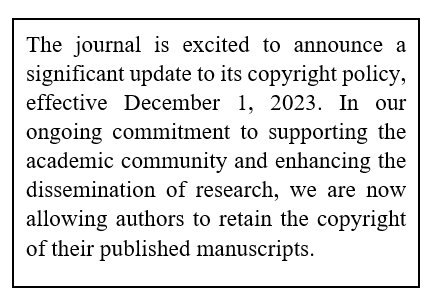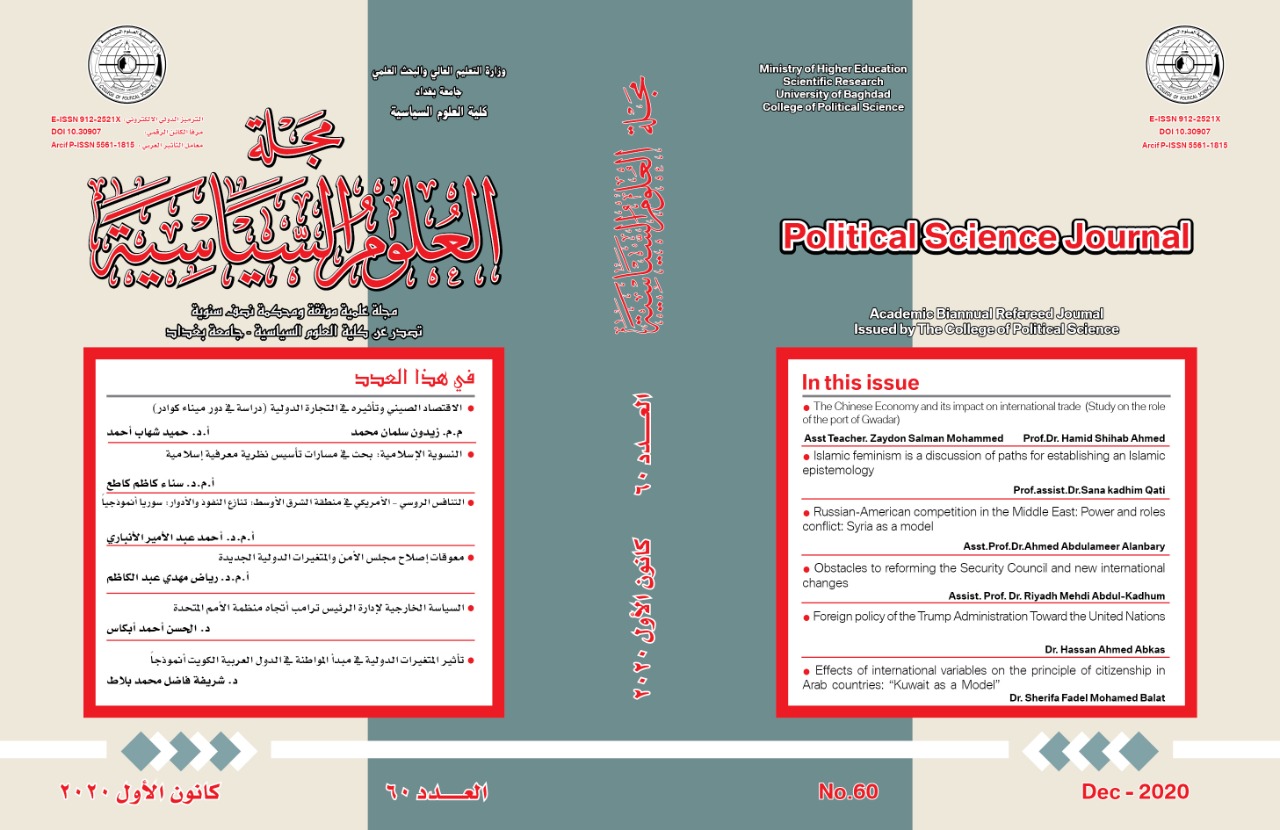Direct democracy and autocracy in Liechtenstein
DOI:
https://doi.org/10.30907/jcopolicy.vi67.706Keywords:
mixed governance system, direct democracy, individual rule, constitutional construction, popular initiativeAbstract
The state of Liechtenstein is characterized by special importance, despite its small area, small population, and limited resources, as a result of its experience in ruling the country. This arouses attention of many people to give an accurate classification about the democracy of its political regime. It is a hybrid regime based on the distribution of power between two main pillars of the country, represented by the popular will, through the practice of the tools of direct democracy that allows people to participate in the decision-making process; and individual rule, represented by the prince, with the exercise of power by them. However, this regime do not eliminate the role of institutions from exercising its duties within legal constitutional frameworks that regulate the work of the state and institutional frameworks that carry out the tasks of legislation, implementation, and judiciary, like other countries. But the difference lies in that; they are institutions that are not the decision-makers in enforcing policies, which makes this regime the focus of discussion and exchange of opinions about its ability to disengage and overlap in the decision-making process; and how institutions carry out their roles in light of such a structure of governance that combines democracy, individualism, and institutionalism in governing the country, and the method of reconciliation between them. So that it maintains its survival and existence in this form and tools and enjoys satisfaction and acceptance that contributes to its support and stability and the development of its political, economic, and social sectors.
References
Armstrong, H. W and Read R. 2002. The phantom of liberty? Economic growth and the vulnerability of small states. Journal of International Development 14(4).
ARTHUR, O. 2002. ‘Small States in a Changing World’. The Fletcher Forum of World Affairs. 2000. Knudsen, O. F. Small states. latent and existing: Towards a general perspective. Journal of International Politics and Development. Vol.24. No.2.
Baker Fox A. 1959. The Power of Small States: Diplomacy in World War II. Chicago: University of Chicago Press.
Baldacchion Godfrey and Wivel Anders. 2020. Hand Book on the politics of small states. UK. Edward Elgar Publishing limited.
Bartmann, B. 2002. Meeting the needs of microstate security. The Round Table: Commonwealth Journal of International Affairs. 91(365).
Björkdahl, A. 2007. Norm Advocacy: A Small State Strategy to Influence the EU. Journal of European Public Policy. Without. https://www.tandfonline.com/doi/abs/10.1080/13501760701702272
Constitution of the principality of Liechtenstein. issued by: legal service of the government of the principality of Liechtenstein. 2003.
Corbett, J and Veenendaal, W. 2018. Democracy in Small States: Persisting Against All Odds. U.K Oxford University Press.
Corbett, J, Veenendaal, W. and Ugyel, L. 2016 Why Monarchy Persists in Small States: The Cases of Tonga, Bhutan, and Liechtenstein, Democratization. Without.
Cornel University Press. Eccardt Th. M. 2005. Secrets of the Seven Smallest States of Europe: Andorra, Liechtenstein, Luxembourg. Malta, Monaco. San Marino. and Vatican City. Hippocrene Books. New York.5-6.
Eccardt Th. M. 2005. Secrets of the Seven Smallest States of Europe: Andorra. Liechtenstein, Luxembourg. Malta. Monaco, San Marino. and Vatican City. Hippocrene Books. New York. 12-13.
Eckhardt, T. 2005. Secrets of the seven smallest states Europe. New York: Hippocrene Books.
Egovernment in Liechtenstein. 2018. European commission.3. https://joinup.ec.europa.eu/sites/default/files/inline-files/eGovernment_in_Liechtenstein_2018.pdf
Jung, Sabine 2001. Die Logik direkter Demokratie. Wiesbaden. Westdeutscher Verlag. 20-22.
Katzenstein P. J. 1995. Small States in World Markets: Industrial Policy in Europe Ithaca. New York
Kliger, B. C, 2011. Small States of Europe: Designer Nations in the postmodern world. Lanham, Maryland: Lexington Books.
large Curtis. 2023. Microstates and the EU: identity policy making and the quest for an independent future. Curtis large. E- international relations. https://www.e-ir.info/pdf/101477
lukaszewski Marcin. 2001. Research on European Microstates in social science selected methodological and definition al problems, journal of interdisciplinary research. 1-8.https://www.magnanimitas.cz/ADALTA/0102/papers/A_lukaszewski.pdf
Lukaszewski Marcin. 2015. microstate and modern word the political system of Liechtenstein and its specificity (an outline of the problem).69- 101 file:///C:/Users/pc/Downloads/pp-2015-3-093%20(1).pdf
Marxer Wilfried. 2007. conferencia internacional- Democvacia directaen America latina 14/15 de marzode dieect Democracy in Liechtenstein. Buenos Aires Argentina. 1- 98.https://s3.eu-central 1.amazonaws.com/ext-linst-c5-web-liechtenstein-institut.li 2019/2115/7435/0264/Marxer_Direct_Democracy_Buenos_Aires.pdf
Moeckli Daniel and Ibi Anna forgacsana Henri. 2021. tge legal limits of direct Democracy a comparative analysis of referendums and initiatives across Europe edited. Wilfried Marxer. Liechtenstein. UK: Edward Elgar Publishing ltd. 4- 519.
Office for Democratic institution and human rights (OSCE). 2020 principality of Liechtenstein parliamentary elections 7 February 2021. odinr needs assessment mission report 23-26 November 2020, Warsaw 11 December. 202010.4- 45 https://www.osce.org/files/f/documents/a/f/473469.pdf
Peter j. nstein Katze.2003. Small states and small states, new political Economy. VOL8. NO1. U.S.A. without.
Pfeiffer Kornelia. 2022. country profile Liechtenstein. compendium cultural policies and trena. https://www.culturalpolicies.net/2023/05/25/cultural-policy-report-liechtenstein/
Rayner Lynn. 2003. Small states in world politics: Explain foreign policy behavior. New York.
Vatter, Adrian 2000. Consensus and direct democracy: Conceptual and empirical linkages. in: European Journal of Political Research. no. 38. 174-176.
Wouter P. Veenendaal, a big igniting realm smallness monarchy and political legitimacy in the principality of Liechtenstein, Swiss political science association Swiss political review (2015) vol.21 (2), 2014.337-338.
Veenendaal Wouter. , 2017 the curios case of Liechtenstein: A country caught between a prince and Democracy. file:///C:/Users/pc/Desktop
Wohlgemuth Michael. 2021. Liechtenstein: a tale of unusual sovereignty. stiftung fur stoatsrecht und ordnungspolitik. 337- 338.https://sous.li/wp-content/uploads/2021/06/Liechtenstein-sovereignty-for-SOuS-4.pdf
Downloads
Published
Issue
Section
License
Copyright (c) 2024 Samer Nahedh Khudair

This work is licensed under a Creative Commons Attribution 4.0 International License.






 ©️ 2023 The Author(s). Published by College of Political Science, University of Baghdad. This is an Open Access article distributed under the terms of the
©️ 2023 The Author(s). Published by College of Political Science, University of Baghdad. This is an Open Access article distributed under the terms of the 












